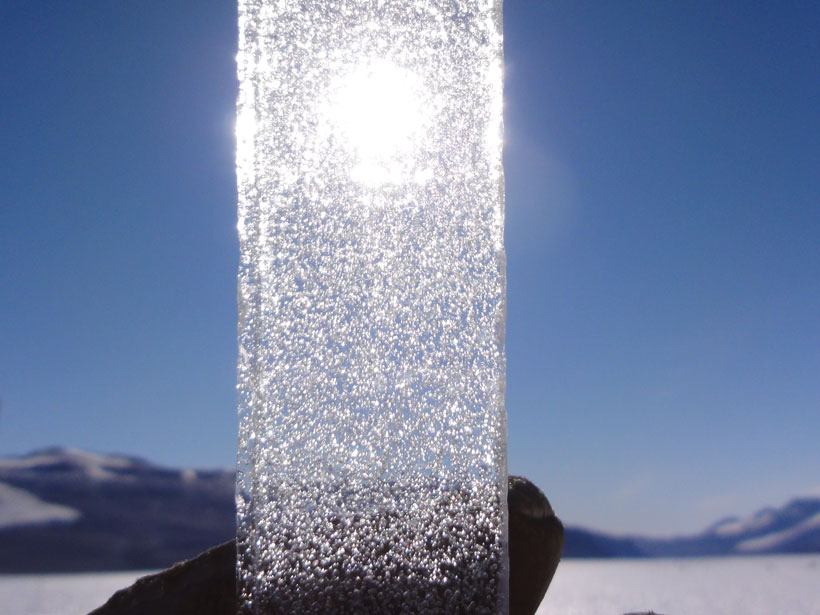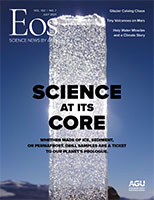We’ll probably never get a real Jurassic Park—and that’s almost certainly for the best—but we are learning quite a bit about what it was like to live during at least the final period of the dinosaurs.
In China’s Songliao Basin, a research team on a drilling project called SK (initiated in 2006) has recovered 8,200 total meters of sediments spanning the entire Cretaceous. During one phase they drilled as deep as 7,018 meters. Their work will give us a thorough and fascinating look at terrestrial climate change during a time of rapid evolutionary turnover.
The heart of the SK team’s research—and the theme of Eos’s July issue—is the study of cores. After completing the drilling phase last February, the team has now turned to inspecting their core samples. Read more in “An Unbroken Record of Climate During the Age of Dinosaurs,” where Chengshan Wang and colleagues explain what they’ve discovered about “Earth’s most intense greenhouse state of the past 150 million years” and what it could tell us about what humans are in for as our climate continues to rapidly change.
Through sediment cores and ice cores, permafrost cores, and even tree rings, scientists have discovered myriad vehicles that allow us to look into the past. Collecting these time machines can be enormously expensive and time-consuming and sometimes only through rare, if terrible, opportunities—such as the chance to collect 9-meter-diameter “cookies” from giant sequoias after loggers felled a third of what is now Sequoia National Park in California, as Thomas Swetnam explains in our feature story.
Given the investment in collecting them, what do researchers do with all these cores once they’ve completed their initial studies? They put them in core libraries, of course, for the benefit of future research. And much like our traditional community libraries, core libraries need support and funding to make sure they survive. In the feature linked above, we look at how several collection caretakers are “future-proofing” these records, sometimes in dramatic scenarios, such as when Tyler Jones rushed to protect a freezer of ice cores at the Institute of Arctic and Alpine Research, or INSTAAR, in Boulder, Colo., in 2013.
Finally, even the best-protected library can be challenging to use if there is no indexing system. Nikita Kaushal and colleagues write about their modern-day Dewey Decimal System for speleothems. Their clever standardization and categorization are already the basis of many papers by researchers who now have richer access to these paleoclimate cave specimens.
We finish off our look at core research with another delightful crossword puzzle from Russ Colson in the print issue. We hope you can find time to take a break, center yourself, and dig right into our core clues.
—Heather Goss (@heathermg), Editor in Chief
Citation:
Goss, H. (2021), Cutting to the core, Eos, 102, https://doi.org/10.1029/2021EO159813. Published on 24 June 2021.
Text © 2021. AGU. CC BY-NC-ND 3.0
Except where otherwise noted, images are subject to copyright. Any reuse without express permission from the copyright owner is prohibited.


